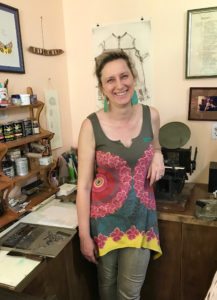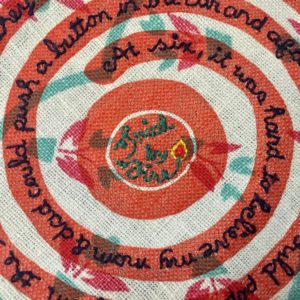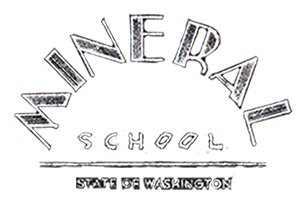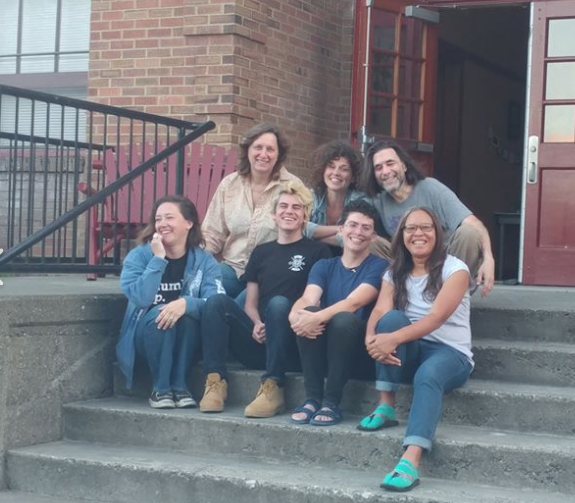Blog
Meet a Resident: Catherine Alice Michaelis

Photo Credit: Rob Zuckerman
Catherine Alice Michaelis of Shelton, Washington joined Mineral School for our 2019 residency as the Mona Lisa Roberts fellow in visual art. Catherine is a book and paper artist whose work has been collected by 85 public institutions. She is also a curator and collaborative printmaker. Read more about her work at her website. Kait Heacock asked her about her work past, present, and future.
How does nature play a role in your art practice?
Nature has been healer, teacher, and friend to me. For me, nature is integral to who and what we are and everything in our universe, including the invisible relationships between what we might call spirit and matter. Nature inspires me on this macro, alchemical, and philosophical level, but also at the level of flowers, springtime, and what’s in a raindrop.
When I was a child, my grandmother Alice introduced me to the caring of plants, and it was my love for her and what she offered that opened this door. I began by learning how to make sick house plants well again. I then learned how to grow food, medicinal, and ornamental plants. As an adult I began to hike and backpack into the mountains and ocean beaches. Being outside with plants connected me to my grandmother, which was my only solace during hard times. Creating work that celebrated nature seemed the least I could do to honor both plants and my grandmother.
A lot of my creative work has ethnobotanical content, reflecting my fascination with the many ways people and plants have worked together. How art and nature intersect, especially the making of ink, dyes, and paper, grabbed my attention when I started to learn letterpress printing, and for a brief time I thought I might become a paper maker.
By studying plants, I’ve learned about many things — from how seeds travel to how cultures are informed by the patterned movements of planets and stars. I’ve made artist’s books on these themes.
Right now I am thinking a lot about death. My parents are gone and I lose more friends each year than the last. Nature is life, even death is life.
You’ve been producing art in the Pacific Northwest since you worked on your first letterpress in the early 1990s. How would you define Pacific Northwest art?
I have never thought about what defines PNW art. I am not a historian or academic, I didn’t go to art school, and only recently finished college, so I don’t think I am qualified to say. I have a lot of artist friends, but we’re more about creating than defining. I do see the Puget Sound environment reflected in a lot of our work, representing a care and love for the world around us. I also see a lot of support for other artists. Many people gave me a hand up, and I see that happening around me, and do the same.
 You sew, make prints, write poetry, and film movies. Do you find it easy to move between artistic mediums? What can one medium do for you that another cannot?
You sew, make prints, write poetry, and film movies. Do you find it easy to move between artistic mediums? What can one medium do for you that another cannot?
Sometimes it is easy to move between mediums and sometimes not. As a book artist, a lot of mediums are already available. A book artist can print, paint, write, sculpt, draw, sew, photograph, and more — just about everything. I often have my fingers in a lot of projects and I hold a lot in my head until both mental and physical space opens for me to move forward on an idea.
An artist book for me is about bringing together content and structure in a meaningful way; they have to speak to each other. For a long time my writing about plants was my artist book work and my poetry I sent out for publication. My poetry was very personal and seemed better held in other people’s hands, plus I knew my family would never see it if I didn’t print it. When I started putting personal themes into my artist’s books I felt very exposed, but over time I’ve become more comfortable with that.
I started sewing text and making one-of-a-kind artist books when my mother died. My mother had sewed all her life. I was able to grieve and heal our past by sewing my writing about my mother — it’s what felt right. I liked the sewing and have kept at it. I am still printing, but not as much. Printing is more about multiples and editions. When I began, I thought if I made one-of-a-kind books I would never want to part with them. Now, nearly 30 years later, nothing seems so precious to me that I can’t let it go. I also have less patience for binding edition work. So it’s been good to mix it up.
Video/film/photography is the medium I am having the hardest time integrating. Every new year’s resolution is that this will be the year I get back into making video poems. This medium seems much like designing books. Each frame of film could be considered a page. It’s also a lot of computer time, and that time is hard to find when I want to be outside and moving my body.
I am always working on multiple projects. This way when one of them stumbles, I can move to another project while I process how to get unstuck. It can be multiple artist books, or multiple mediums. I always have more ideas and projects than actual time to see them all through.

“Trial by Fire”
What project did you work on during your time at Mineral School? How did your time there inform your work?
Mineral School was an amazing place to be. I was offered a lot of freedom to do whatever I wanted, and I took it. I came with a memoir in process, a sewn artist book to finish, a portable proofing press and a box of linoleum for working out visual ideas, and a lot of collage materials to play with. I also had several artist book ideas floating around in my head for a while, for which I wanted to get words and images down on paper.
Before Mineral School I had been submerged in curating two international artist book shows, and what I needed was time to play and get away from deadlines, emails, and committee meetings.
Collage is a great teacher for me partly because it’s not my medium, so I wasn’t trying to produce work from it — just practice seeing. So collage was my warm up medium when I arrived at Mineral, and I thought it would be a daily ritual, but that was overly optimistic.
I worked much on my writing, which is my first creative love and something I find challenging to carve out time for when I have deadlines. I also made great headway on stitching “Trial by Fire,” a memoir piece inspired by hot flashes and the memory challenges of menopause, but it became so much more. Stitching I could do in the social spaces of Mineral School, so I could choose to be social and still be productive.
Lastly, I came to Mineral School with a desire to be inspired by the town. What could being in this place inspire me to make that no other place would? Could I come with no idea for an artist book or video poem and leave with something substantial that represented Mineral? I was assuming it would be the flora and fauna, but then I met my first dorm mom, Jess Martin.
Jess shared a lot of information and passion for Mineral and its inhabitants. While I met interesting and lovely people, I also met the “bat house” which I visited nearly every night to watch, photograph, and film the coming and going of bats. I was fascinated and expected this to lead to something. But then Jess introduced me to the inhabitants of the Mineral Cemetery.
Inspired, I went to the cemetery every day, usually twice, to photograph, video, make rubbings, and take notes of the gravestones, pinwheels, flowers, and trees. Each night before dark I went to the bat house. It kept me pretty busy. About one week in I began writing letters to some of the people whose names I read on the headstones. These letter-poems are working their way to become a sewn artist book. It’ll take some time. I want to make a video poem with all the video and photographs from the cemetery.
Where can folks see your work?
My work can be seen on my website: www.catherine-alice.com
And for local folk — I am often included in the group shows that rotate through the Sherry Grover Gallery in the Bainbridge Island Museum of Art, and nearly every artist book I create in edition is collected by the Allen Library at the University of Washington. A very small representation of my work is at Mortlake & Co. (an esoteric bookstore) in Pioneer Square, Seattle.
For out of area folk — bits of my work have been collected by 90 other public institutions around the U.S. and a few internationally. Check your local special collections library at your major colleges and universities.
What project is next for you?
I’m preparing for a broadside and print show in Olympia, WA in April 2020 at Bar Francis. The broadsides are of coffee cups making social commentary. I’ll likely add some leaf and flower prints to the show as well.
I’ve begun collaborating with both a writer and a scientist to create an artist book on climate change and ocean acidification. This will be a printed edition and made for a science and artist book show at the University of Puget Sound, Tacoma in 2021.
For 2022, I am preparing for a 30-year retrospective. I will have the artist book inspired by Mineral ready for this show, as well as some other new work I’m developing.
That’s Catherine on the top row, far left, with artists from the Class of July 2019.





